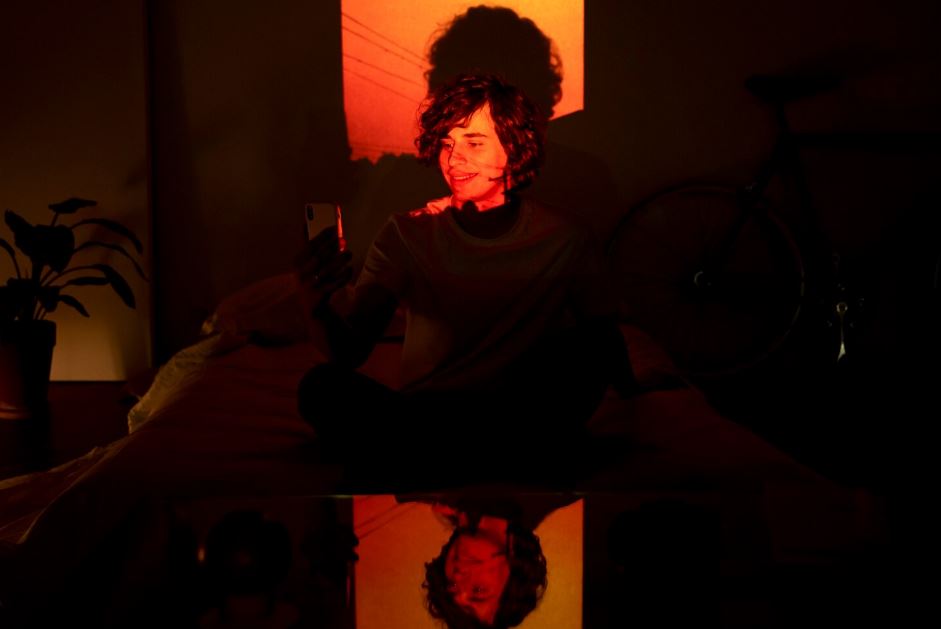
Through fear, listeners are seeking meaning rather than just chills. Our fascination with dark podcasts stems from curiosity rather than chaos, as Dr. Coltan Scrivner eloquently explains. Listeners develop their ability to deal with uncertainty by losing themselves in eerie tales. When handled safely, the rush of fear can be a very powerful tool for increasing awareness and resilience.
According to Scrivner’s research, this is known as “morbid curiosity,” a psychological mechanism that has developed to enable people to learn from threats without actually being in danger. People mimic survival experiences by listening to spooky tales or true crime stories. These sessions are especially helpful for emotional processing because their minds practice empathy and vigilance at the same time.
| Category | Details |
|---|---|
| Main Focus | The Philosophy of Fear: Understanding why millions find solace in dark and crime-themed podcasts |
| Leading Researcher | Dr. Coltan Scrivner, Behavioral Scientist at Recreational Fear Lab, Aarhus University |
| Supporting Experts | MrBallen (storyteller), Dr. Philip Horner (neuroscientist), Connor Beaton (philosopher-podcaster) |
| Core Concept | Morbid Curiosity — fascination with danger in safe settings |
| Key Shows | Crime Junkie, Morbid, My Favorite Murder, The Art of Fear, Thrills & Chills |
| Psychological Purpose | Exploring fear to build emotional resilience and self-awareness |
| Audience Insight | Majority female demographic drawn to safety learning and empathy |
| Broader Impact | Redefining entertainment as a tool for understanding human nature |
The legendary podcaster and former Navy SEAL Mr. Ballen has transformed storytelling into a form of group therapy. His gentle tone and remarkably lucid storytelling turn gloom into introspection. He transforms every episode into a reflection on the strength and frailty of humanity by skillfully and sympathetically narrating tragedy. Many of his fans perceive his stories as discussions about bravery rather than admissions of fear.
According to neuroscientists like Houston Methodist’s Dr. Philip Horner, the human brain isn’t very good at telling the difference between imagined and real fear. The same rush of adrenaline that helped early humans fend off predators now feeds the interest in crime podcasts. However, that surge becomes extremely effective at reducing stress and improving focus when it occurs within safe bounds. It serves as the body’s reminder that safety and alertness are compatible.
Their fascination is frequently compared to emotional training by listeners. They become less sensitive to fear through repetition, turning fear into interest. This is based on a timeless philosophy. Catharsis, according to Aristotle, is the process of purifying emotions via artistic expression. In more contemporary terms, podcasts about darkness accomplish the same goal: they purify the mind by allowing fear to flow in moderation.
This desire for “safe fear” is a reflection of larger societal patterns. In times of uncertainty, like pandemics or political upheaval, viewers seek solace in dark entertainment. In an unpredictable age, the narrative structure of fear—build-up, climax, resolution—offers predictability. Even when the subject is disturbing, that structure becomes especially calming.
This rhythm is expertly mastered by true crime podcasts such as Crime Junkie and Morbid. The hosts, who are frequently women, combine humor and education, lightheartedness and seriousness. Their tone is profoundly human and never exploitative. Through the common experience of fear, listeners discover a sense of solidarity. Horror becomes insight when empathy and analysis are combined.
This gendered trend is particularly noticeable. According to psychological research and Reddit, women make up the majority of true crime viewers. However, this is about readiness, not morbidity. Many listeners learn from actual cases in ways that feel empowering, using these stories to spot warning signs. Through these stories, they negotiate fear as observers who assess danger from a distance rather than as victims.
Fear, according to cultural theorists like Julia Kristeva, is a mirror that reflects our boundaries. We are forced to confront chaos, mortality, and loss by horror. In his cosmic dread, Lovecraft described fear as an experience of the unknown. Dark podcasts are philosophical exercises in this way. Every episode challenges viewers to face the unknown and come out of it emotionally stronger, having gazed into symbolic darkness without succumbing to it.
Fear has also been made more accessible by the podcast boom. ManTalks by Connor Beaton explores the vulnerability of men facing their inner demons. The Aesthetics of Fear by Michael Granado examines how the aesthetics of horror elicit thought. These programs imply that, when approached with consideration, fear can serve as a springboard for self-awareness.
This fascination has easily adapted to social media. Instagram and TikTok short-form videos distill tension into manageable chunks. Because the algorithm thrives on uncertainty, fear’s instinctive attraction is a perfect fit. Every whispered “true” event and every short story demonstrates how flexible and remarkably versatile fear-based content has become in digital storytelling.
This process is beautifully illustrated by Scrivner’s research on “scary play.” Participants intentionally control their exposure to horror movies, podcasts, and haunted houses. They automatically reduce their level of fear by lowering the lights, stopping the story, or spending time with friends. They lean in again when it feels too gentle. People who achieve this balance develop emotional mastery, a feedback loop of restrained bravery that significantly increases their capacity to withstand stress.
Research demonstrates that horror fans are not indifferent or desensitized, despite popular belief. They frequently show increased imagination and empathy. Horror fans scored higher on social sensitivity and lower on coldheartedness, according to a recent study published in the Journal of Media Psychology. Simulated danger increases empathy by teaching the mind to be caring while facing fear.
This dark aesthetic has also been adopted by celebrities. By combining eerie imagery with gentle vocals, Billie Eilish turned discomfort into art. The Haunting of Hill House on Netflix transformed sorrow into a ghost story. Comedians have also joined the discussion. A cathartic rise and fall that helps people safely process fear, Small Town Murder combines humor and crime to create a rhythm between laughter and terror that mimics actual emotional cycles.
This fascination would be seen as a brave act by philosophers such as Nietzsche. He maintained that growth requires facing chaos. Intentionally or unintentionally, dark podcasts reflect that mindset. Every episode serves as a trial run for handling discomfort and a practice run for handling anxiety in real life with poise.
